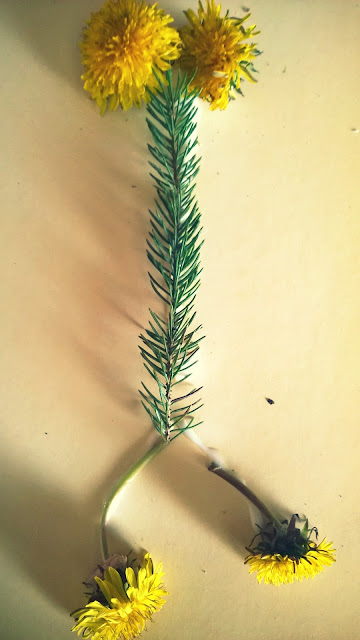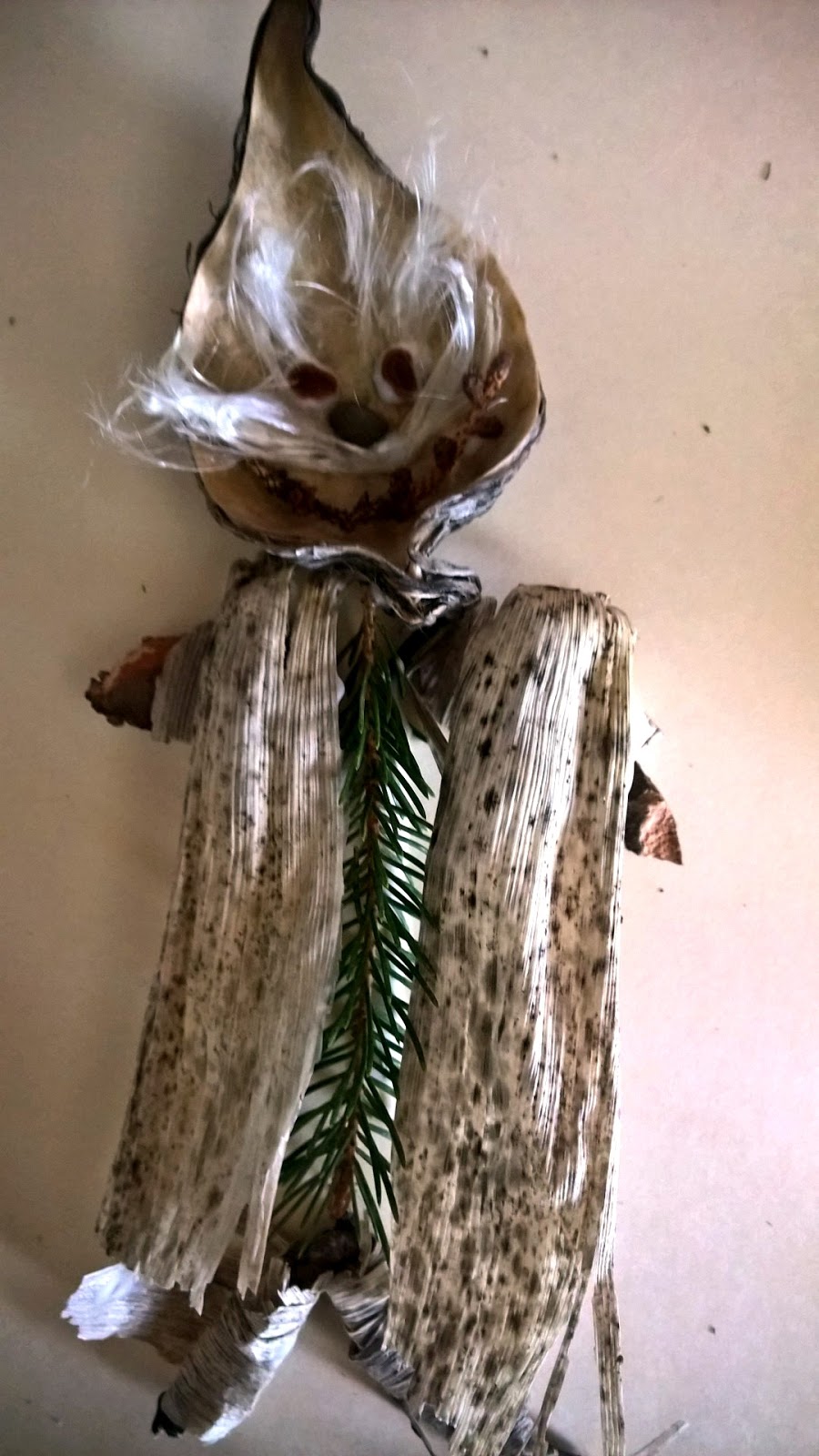 |
Children love to forage and collect "treasures." Send them outside with a basket, in search of all kinds of nature's trinkets:
- pine cones
- twigs
- seed pods
- leaves
- stems
- flowers
- rocks
- feathers
- shells
- moss
Once the children have collected a pretty good haul of Mother Nature's gems, you can use them to make a nature collage:
The collage can be a free-flowing, abstract piece, or might make more realistic images, such as this old man, made with milkweed pods, twigs, and corn husks:
Outdoor Materials Collage
1. Collect small items from outside, such as pine cones, small sticks, pebbles, or seed pods.
2. Use a sturdy material as your canvas, such as cardboard or tag board. It can be small, like a post card, or large, like a poster.
3. Older children may be able to use a hot glue gun (or an adult could do the gluing), otherwise, just use regular white school glue. Be sure that your outdoor pieces are not too heavy, otherwise they will fall off.
4. Very young children will likely glue the shapes on in a random, abstract fashion. Older children will be able to create people, animals, and scenes with their materials.
5. Allow the glue to thoroughly dry before displaying. They can be framed and hung as wall art or even used as greeting cards.
 | ||
| "Funny Man," by Palmer, Age 4. |
 |
| "Boat of the Seas," by Lily, Age 4. |



I envy you, my kids love spending their time in front of computer, I hope they will spend their time outdoor more often
ReplyDelete